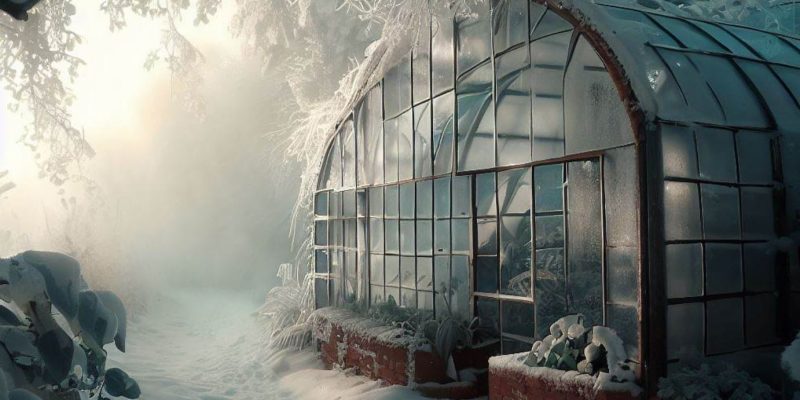Cultivating plants, vegetables, and fruits during winter presents various challenges. To overcome these obstacles and create an optimal environment for your plants, it is crucial to select the appropriate greenhouse plastic material, which plays a vital role in providing protection and maintaining ideal growing conditions.
In this article, we’ll discuss the specific needs of plants in winter and the characteristics of the best greenhouse plastic covering to meet those needs. We will then provide recommendations for greenhouse plastics that are suitable for winter use, along with their pros, cons, and popular brands or models.
Choose Greenhouse Plastic Based on Winter Plant Needs
Winter presents several challenges for plants, including lower temperatures, reduced sunlight, and harsh weather conditions. To provide the best protection for your plants during the cold months, you may need to consider the following factors when choosing greenhouse plastic.
- Insulation: One of the primary concerns during winter is maintaining a consistent temperature within the greenhouse. So you can choose a type of greenhouse plastic material that offers good insulation properties, such as double-layered polyethylene or multiwall polycarbonate panels.
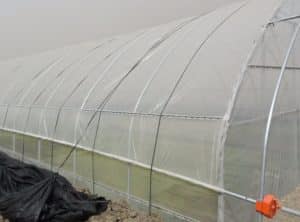
Double-layered polyethylene
- Light Transmission: With shorter daylight hours and lower sun angles in winter, it’s crucial to maximize the light that reaches your plants. So you are recommended to select a greenhouse plastic with high light transmission, ideally above 80%. And you know clear plastics generally provide the highest light transmission.
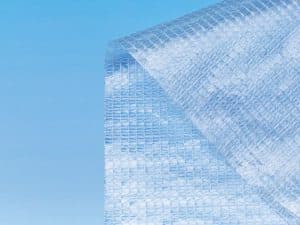
High light-transmission woven plastic by INSONSHADE
- Durability: Winter weather conditions, such as snow, ice, and strong winds, can put stress on your greenhouse structure and covering. Therefore, you’d better opt for a durable greenhouse plastic material, like woven polyethylene or reinforced polyfilm, to withstand these conditions.
- UV Stabilizers: UV radiation can degrade greenhouse plastics over time, reducing their effectiveness and lifespan. Then it’s wise to choose a plastic with UV stabilizers to extend its longevity and maintain performance.
- Infrared Tint: In cold climates, an infrared tint added to greenhouse plastic can help reduce heat loss by reflecting infrared radiation back into the greenhouse. This feature can help maintain a stable temperature within the structure. So this feature will be a consideration.
- Anti-drip & Anti-dust Properties: Condensation and dust buildup on greenhouse plastic can reduce the light transmission and contribute to plant disease. So kind in mind to look for greenhouse plastics with anti-drip and anti-dust properties to minimize these issues.
Best Greenhouse Plastics for Winter [Recommendation]
As a manufacturer of agricultural netting and commercial greenhouse coverings, we have extensive experience in providing OEM and ODM services to numerous greenhouse covering brands globally. This expertise enables us to confidently recommend the following plastic products that deliver outstanding performance and protection during the winter months. (If you are considering becoming a local reseller or want to build your own fabric brand, don’t hesitate to contact us for more information.)
1. Solexx Greenhouse Covering
Solexx is a unique, flexible, and insulated twin-wall covering that provides exceptional insulation and light diffusion properties. Its insulating qualities help maintain a stable greenhouse temperature during cold months. Solexx is also highly durable and long-lasting, making it a great investment for winter greenhouses.
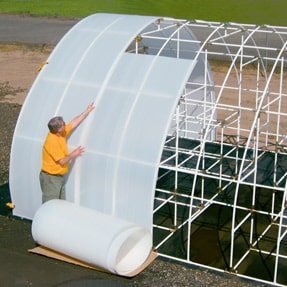
Solexx Greenhouse Covering
2. SunMaster 6 mil 4-Year Greenhouse Film
This high-quality polyethylene film offers 92% light transmission, ensuring your plants receive adequate sunlight during winter. It has UV stabilizers, anti-drip, and anti-dust properties to enhance its durability and maintain its performance. The 6 mil thickness provides a good balance between strength and cost-effectiveness.
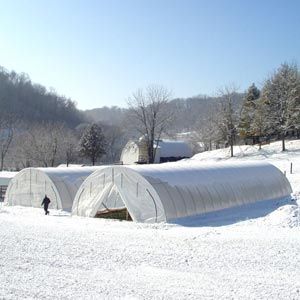
SunMaster 6 mil 4-Year Greenhouse Film
3. Palram 8mm Twin-Wall Polycarbonate Panels
These double-layered polycarbonate panels offer outstanding insulation properties, helping to retain heat in your greenhouse during winter. They provide 82% light transmission and are highly durable, able to withstand harsh weather conditions. UV protection is also included, ensuring a long lifespan for the panels.
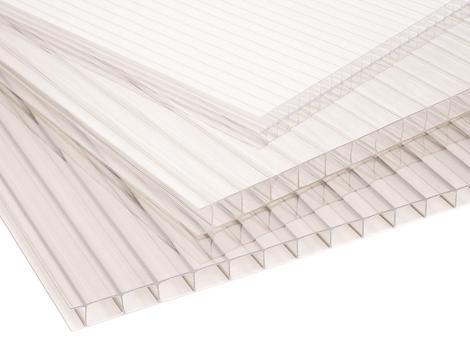
Palram Polycarbonate Panels
4. Farm Plastic Supply 5.5 mil IRAC Greenhouse Film
This premium-quality greenhouse film features infrared and anti-condensation technology, which helps maintain a stable temperature and minimizes condensation issues. It has a light transmission of 91% and includes UV stabilizers for added longevity. This greenhouse plastic is a great option for winter protection, especially in colder climates.
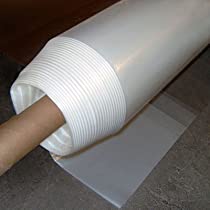
5.5 mil IRAC Greenhouse Film
5. Agfabric Woven Greenhouse Film
This woven polyethylene film is designed to withstand extreme weather conditions, such as heavy snow and high winds. It offers 89% light transmission, ensuring your plants receive sufficient light during winter. The woven construction provides additional strength and durability, making it a suitable option for winter greenhouses.
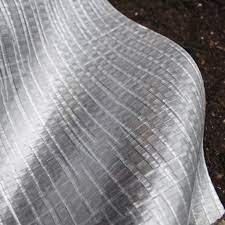
Woven Greenhouse Film
Regional Factors to Consider When Choosing Suitable Plastic
When selecting the material for a greenhouse in a cold climate, it’s essential to consider the specific regional factors that can influence your choice. Here are some important regional aspects you may consider.
- Climate: Different climates require specific types of greenhouse plastics to ensure optimal plant growth and protection during winter. For instance, colder regions with prolonged freezing temperatures may necessitate double-layered or insulated greenhouse plastics, while areas with high humidity could benefit from plastics with anti-condensation and mold-resistant properties.
- Snow load: In regions with heavy snowfall, it’s crucial to choose a greenhouse plastic that can withstand the weight of accumulated snow. Reinforced or woven plastics, as well as polycarbonate panels, are suitable options for these areas due to their increased strength and durability.
- Wind resistance: For locations prone to strong winds, selecting a greenhouse plastic with high tear resistance and secure attachment methods is essential. Woven or reinforced polyethylene materials are ideal in this case, as they provide increased strength and stability.
- Sunlight exposure: The amount of sunlight a region receives can also affect the choice of greenhouse plastic. In areas with limited sunlight during winter, clear plastics with high light transmittance are ideal to maximize photosynthesis. On the other hand, in regions with intense sunlight, opaque or tinted plastics can help regulate temperature and prevent plant damage due to excessive heat.
- Local regulations and building codes: It’s essential to familiarize yourself with any local regulations or building codes regarding greenhouse construction and materials. Some regions may have specific requirements or restrictions on the types of plastics allowed for use in greenhouses.
Conclusion
The best greenhouse plastic for winter depends on your specific needs, budget, and climate conditions. By understanding the winter protection requirements for your plants and selecting a suitable greenhouse plastic with the right characteristics, you can create an optimal environment to maximize your harvest during the cold months. Consider the recommended options above, and weigh their pros and cons to make an informed decision. Don’t forget to take into account greenhouse design, regional factors, environmental impact, and proper maintenance for a successful winter growing season.
